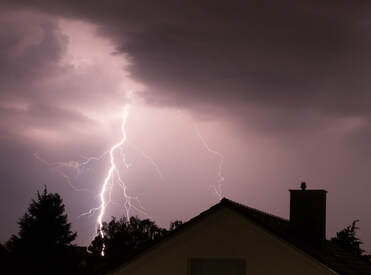 Lightning is one of nature’s most potent forces. Lightning can have destructive effects on property, trees, and people. Every strike of electricity can go over five miles and create temperatures higher than 50,000 degrees F and an electrical charge of more than 100 million volts. Detection systems for lightning sense over 20 million lightning strike annually. This is why it’s crucial to understand how lightning damages trees and what to do to repair them. Trees have a particularly vulnerable position in the landscape since they are usually the highest objects. Tall trees are the most susceptible particularly those growing by themselves in open spaces like in pastures, near water, or on hills. Many of these trees frame the neighborhood streets and surround schools, businesses, and residences. The response of Trees to Lightning A tree’s structural integrity and biological function are affected by lightning. Along the lightning path, steam is produced, cells explode, and sap boils in the wood, making bark to be blown away. If only one side of the tree has evidence of a lightning strike, the odds of the tree surviving and eventually sealing the wound is solid. Though, when the lightning completely goes through the tree trunk with bark and wood exploding everywhere, trees are typically killed. Call a storm tree removal company if you have a dead or damaged tree in your yard. Many trees are brutally injured internally or underground by lightning in spite of the absence of external, visible symptoms. Lightning goes from the trunk of the tree through the roots and dissolves in the earth. Significant root damage from electricity might cause the tree to weaken and die without significant above ground damage. Fertilization and water are recommended to lessen tree stress. Trees Lightning Protection Systems Rare, historic trees, mainly when they are the center of landscapes, are treasured and can be safeguarded by a correctly installed lightning protection system. Trees that animals or people might hide under in a storm must be protected. Trees nearer than 25 feet from a structure or building should also be safeguarded to eliminate side-flash. Golf courses, public buildings, and parks must have big trees shielded to reduce liability risks. |
AuthorWe at Syracuse Tree Service want to help you with your tree service needs, our blog is where we provide helpful tips and ideas for the health of your trees. Archives
December 2020
Categories
All
|
- Home
- Services
- About
- Contact
-
Service Locations
- Liverpool Tree Service
- North Syracuse Tree Service
- Cicero Tree Service
- Baldwinsville Tree Service
- Manlius Tree Service
- Weedsport Tree Service
- Clay Tree Service
- Bridgeport Tree Service
- Lafayette Tree Service
- Fayetteville Tree Service
- Chittenango Tree Service
- Camillus Tree Service
- Onondaga Tree Service
- East Syracuse Tree Service
- Blog
|
Home | Services | About Us | Contact Us
Liverpool | North Syracuse | Cicero | Baldwinsville | Manilus | Weedsport | Clay | Bridgeport | Lafayette | Fayetteville | Chittenango | Camillus | Onondaga | East Syracuse © Syracuse Tree Care 2017
Syracuse Tree Care 4736 Onondaga Blvd Suite 112 Syracuse, NY 13219 (315) 692-0186 |
|

 RSS Feed
RSS Feed